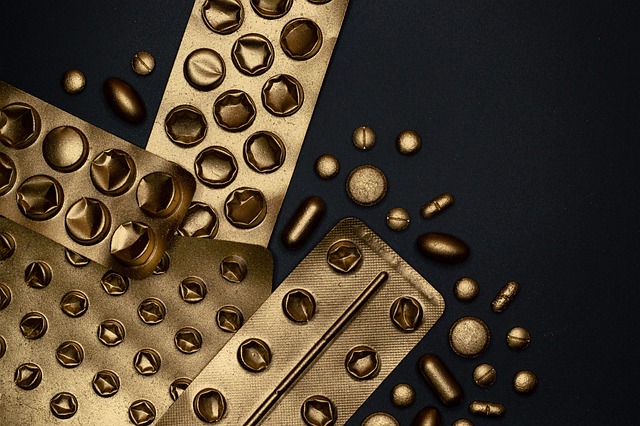Contrast therapy, utilizing alternating hot and cold temperatures, is a powerful tool for athletes' recovery. This ancient practice stimulates blood circulation, reducing muscle soreness, inflammation, and swelling post-exercise or injuries. By causing vasodilation and vasoconstriction, contrast water therapy expedites the removal of metabolic waste products, delivering oxygen-rich blood to affected areas. Athletes often opt for contrast baths or showers, which not only accelerate recovery but also provide mental clarity and relaxation, contributing to overall rehabilitation success and enhanced performance after injuries or strenuous workouts. This holistic approach is gaining popularity in sports medicine as an effective method for both professional athletes and enthusiasts.
Contrast Therapy for Athletes: Unlocking Faster Recovery Potential
Contrast therapy, an ancient practice with modern scientific backing, is revolutionizing the way athletes approach recovery. This therapeutic technique leverages the power of hot and cold stimuli to stimulate blood flow and enhance physiological recovery processes. By alternating between heat and cold, athletes can unlock faster muscle recovery, reduce soreness, and even improve mental focus—all vital components for optimal sports performance. Recent research in sports science has further validated its effectiveness, making contrast therapy an appealing option for athletes seeking a competitive edge while promoting overall well-being.
# Blog Post Outline: Contrast Therapy for Athletes – Unlocking Faster Recovery Potential
Contrast therapy has gained significant attention in the athletic world as a powerful tool to expedite recovery and enhance performance. This ancient practice involves alternating between hot and cold temperatures, stimulating various physiological responses in the body. For athletes, incorporating contrast water therapy into their post-workout routine can be a game-changer. The benefits are numerous; it aids in reducing muscle soreness, inflammation, and swelling, all of which are common after intense physical activity or sports injuries.
The science behind this method lies in its ability to improve blood circulation. Extreme temperatures—whether hot or cold—cause blood vessels to dilate (in response to heat) or constrict (to cold), promoting better blood flow. This increased circulation facilitates the removal of metabolic waste products and delivers oxygen-rich blood to affected areas, speeding up the healing process. Many athletes opt for contrast baths or showers, immersing themselves in hot water followed by cold, to experience these benefits post-training sessions or competitions.
<section id="understanding-the-science-behind-contrast-therapy“>
Understanding the Science Behind Contrast Therapy
Contrast therapy, employing hot and cold stimuli, has gained significant attention as a powerful tool for enhanced athletic recovery. This ancient practice leverages the body’s natural response to temperature changes to accelerate healing and improve performance. The science behind it is rooted in vasodilation and vasoconstriction—the expansion and constriction of blood vessels, respectively. By alternating between hot and cold, contrast therapy stimulates these processes, enhancing blood flow to muscles and removing metabolic waste products that can slow recovery.
For athletes, contrast water therapy offers a versatile recovery method. Immersing in contrast baths or using contrast showers involves rapid temperature shifts, typically from cold to hot. This technique has been shown to reduce muscle soreness, decrease inflammation, and speed up the repair of micro-tears in muscles caused by intense exercise or sports injuries. The benefits extend beyond physical recovery, as the mental clarity and relaxation induced by contrast therapy can further aid in the overall rehabilitation process.
– Explain the physiological response to hot and cold stimuli.
The human body’s response to contrasting hot and cold stimuli is a fascinating physiological process that forms the basis of contrast therapy, a powerful tool for enhanced recovery among athletes and active individuals. When an individual exposes themselves to alternating heat and cold, such as through contrast showers or baths, it triggers a series of reactions in the body. Initially, heat increases blood flow to the skin’s surface, causing vasodilation, which facilitates the transport of nutrients and oxygen to tissues. This enhanced circulation supports muscle recovery and reduces post-exercise inflammation.
Conversely, cold exposure prompts constriction of blood vessels, slowing down blood flow and reducing swelling. This process helps alleviate pain and minimizes damage to injured muscles and connective tissues. The alternating pattern of heat and cold further enhances recovery by promoting the excretion of metabolic waste products, such as lactic acid, that accumulate during intense physical activity. By combining these contrasting stimuli, contrast therapy for athletes offers a holistic approach to accelerating muscle repair and optimizing performance recovery after sports injuries or strenuous workouts.
– Discuss how contrast therapy stimulates blood flow and enhances recovery processes.
Contrast therapy, a practice that alternates between hot and cold stimuli, has gained significant attention in the athletic recovery landscape. This method stimulates blood vessels to dilate (hot) and constrict (cold), enhancing circulation. Improved blood flow accelerates the removal of metabolic waste products from muscles, such as lactic acid, which is often associated with delayed-onset muscle soreness. By facilitating this process, contrast therapy can significantly reduce inflammation and speed up recovery after intense physical activity or sports injuries.
For athletes, contrast water therapy, including soaking in alternating hot and cold baths, has been shown to offer numerous benefits. It promotes faster muscle recovery, reduces swelling, and increases endurance by improving microcirculation. The combination of heat and cold signals the body to produce more blood vessels and enhance oxygen delivery to tissues, further supporting the repair and regeneration of muscle fibers. As a result, contrast therapy is increasingly adopted as an effective recovery method in sports medicine, benefiting both professional athletes and enthusiasts looking to optimize their post-workout routines.
Contrast therapy, through its clever manipulation of hot and cold stimuli, offers a powerful tool for athletes to accelerate their recovery processes. By stimulating blood flow and promoting the elimination of metabolic waste, this ancient practice gains modern scientific backing for its effectiveness in enhancing muscle recovery and reducing inflammation. Incorporating contrast water therapy into post-workout routines can provide significant benefits, making it an attractive option for sports enthusiasts seeking a natural, efficient path to healing and improved performance.
